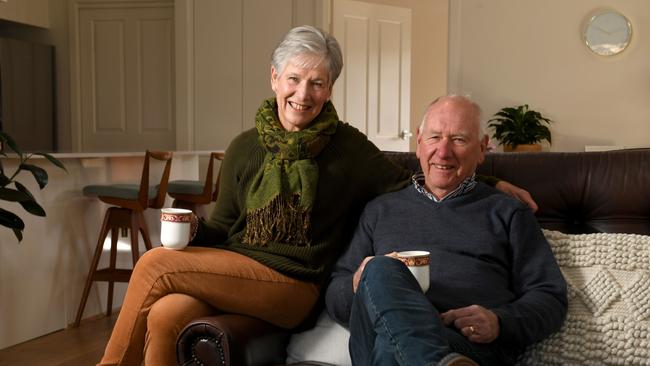Secrets to downsizing success revealed: What you need to know before moving to a smaller home
Border closures and forced time at home has spurred on a change in retirement plans for many older Australians that experts say can be seriously beneficial for your bottom line.
Downsizing isn’t an option right now for those older Australians with homes full of adult children impacted by COVID-19 border closures, but for others it’s a way to free up time and money.
They may wish to shift into a smaller low-maintenance home, or unlock wealth that’s tied up in their property, and there’s a growing range of options for retirees who don’t want to move.
Retirement finance specialists say it’s vital to do research, ask plenty of questions, and plan ahead where possible.
The pandemic’s impact on interest rates and share dividends is squeezing the incomes of many seniors who were already asset rich but income poor, and Smooth Retirement director Bob Budreika says reverse mortgages and similar products are an option.
The $3 billion reverse mortgage sector allows seniors to borrow against their home equity, and the loan gets repaid when the home is eventually sold.

The Federal Government has a form of reverse mortgage through its Pension Loan Scheme, which allows pensioners to boost their fortnightly income by borrowing against their home equity at an interest rate of 4.5 per cent.
Newer home equity release schemes are appearing, and Budreika says retirees should “do your homework and get good advice”.
He says some people who take the traditional downsizing route don’t factor in costs such as stamp duty, real estate agent fees and restyling expenses.
“The average person who lives in the suburbs and downsizes may be disappointed to find out after paying all the costs they have not much left over.”
Retirement villages and units work for many people, with costs ranging from $75,000 to well above $500,000 depending on size and location, and usually involve residents purchasing a lifetime lease with a refund payable at the end.
MONEY ‘WASN’T THE MAIN AIM’
For Leith Bell and wife Barbara, pictured, downsizing earlier this year from their large suburban block to an ACH retirement unit was a lifestyle decision rather than a financial necessity.
“Making money out of it wasn’t the main aim,” says Bell, 75.
“It was the size of the property – we have got a much smaller property now, which is good, and we are putting our own footprint on it,” he says.
“If we were getting younger we wouldn’t have moved, but unfortunately we’re not.”
DomaCom CEO Arthur Naoumidis says some seniors can use equity release products for a downsizing test-drive.
“Instead of taking the leap and selling their home they can do an equity release, use the money to fund entry to a retirement village, rent out their home, keep the rent to fund the village costs and if they decide to, they can move back into their home when their tenants’ lease expires,” he says.
Naoumidis says it is essential to get advice, and regulators require this, and understand tax, Centrelink and family issues.
Originally published as Secrets to downsizing success revealed: What you need to know before moving to a smaller home

